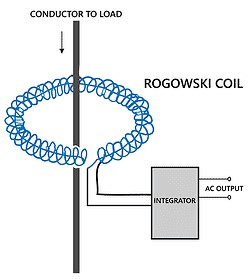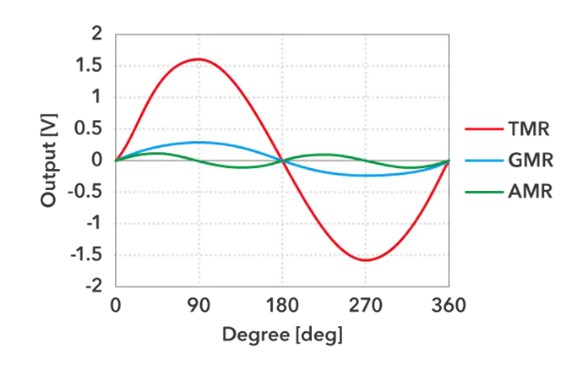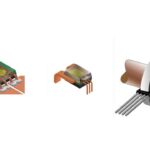Part 1 of this blog addressed current shunts and Hall-effect sensor designs. This part discusses current transformers and new technology options such as magnetoresistance and even diamond quantum sensors.
One of the major issues in today’s electric vehicles (EVs) is the ongoing evolution of technology with the standards evolving as well. In the 100+ years that fossil-fuel power vehicles have existed, the almost exclusive use of leaded and then unleaded gasoline and diesel fuel allowed fueling stations to be located wherever they were needed in countries around the world with standardized fuel dispensing. While the voltage in today’s EVs is usually around 400 V, the connectors for the fastest (Level 3) charging have three different designs: the SAE Combo, Tesla, and CHAdeMO. However, with its recently introduced Performance Battery Plus, Porsche now offers production cars (Taycan models) with a system voltage of 800 volts (voltage range of 610 to 835 volts). Higher voltages mean faster charging and ongoing changes could cause system designers to change their choice of current sensors in certain EV systems.
Current transformer sensors
Current transformer sensors are offered in two different design variations: conventional and Rogowski coil. Based on Faraday’s law, the current transformer sensing is a non-invasive (isolated) technique that measures alternating current (AC). It uses a coil with a magnetic core, and the conservation of ampere-turns ratio to significantly reduce the measured coil current from the primary current level. Typically, a current transformer would have a single-turn primary and a 10- to 1,000-turn secondary wound on a magnetic core material chosen for the frequency range. In addition to their inherent isolation, current transformers are also highly linear and can achieve a wide dynamic range.
Instead of using a magnetic core, a Rogowski coil is an air-core solenoid bent into a nearly closed circle around a high current carrying conductor to measure AC. Unlike ferromagnetic materials, air does not incur non-linearity or saturation, so the lack of a magnetic core provides the Rogowski coil an ability to read very high frequency and high amplitude currents. However, instead of directly indicating the amount of current, its output is proportional to the rate of change in current (di/dt). To obtain the current reading, the coil’s output has to be integrated. Consequently, the integrator inevitably limits the frequency and amplitude range that the coil can measure.
Magnetoresistance sensing
The electrical resistance of a magnetoresistance sensor changes when it is subjected to an external magnetic field. Magnetoresistance sensing products are available in three types: anisotropic magnetoresistance (AMR), giant magnetoresistance (GMR), and tunnel magnetoresistance (TMR) technologies. Unlike an AMR element or GMR element, a tunnel magnetoresistance (TMR) element can produce a much higher output. As the newest magnetic sensor technology, TMR’s advantages for EV current sensing applications include less susceptible to temperature change, extremely high magnetic sensitivity, and high SNR. Other advantages of TMR include low power consumption, programmable overcurrent detection and fault pin, bidirectional sensing, and high-voltage isolation to ensure safety.
Diamond quantum current sensor
While still in the research and development mode, diamond quantum sensors offer an inherently wide dynamic range and high sensitivity for measuring the battery current. The researchers’ design uses the differential detection of two sensors to eliminate in-vehicle common-mode environmental noise. A mixed-signal analog–digital control traced the magnetic resonance microwave frequencies of the quantum sensor over a wide dynamic range and indicated no deviation.
In a prototype battery monitor, the diamond quantum sensor measured battery current up to 130 A covering the Worldwide Harmonized Light Vehicles Test Procedure (WLTC) driving pattern. The ability of the current sensor to accurately estimate battery state of charge was analyzed to be 10 mA. Testing confirmed an operating temperature range of − 40 to + 85 °C and a maximum current dynamic range of ± 1000 A.
References
The new 2025 Porsche Taycan models – Porsche Newsroom USA
Taycan, Taycan 4S, Turbo and Turbo S – The battery – Porsche Taycan
Charged EVs | A closer look at current sensors in EVs – Charged EVs
Image source: Optimizing Performance from Rogowski Coil Current Transformers – DENT Instruments
TMR Coreless Current Sensing in EVs https://crocus-technology.com/tmr-coreless-current-sensing-in-evs/
Image source: TMR Sensor Solution: Precision EV Battery Monitoring | TDK



